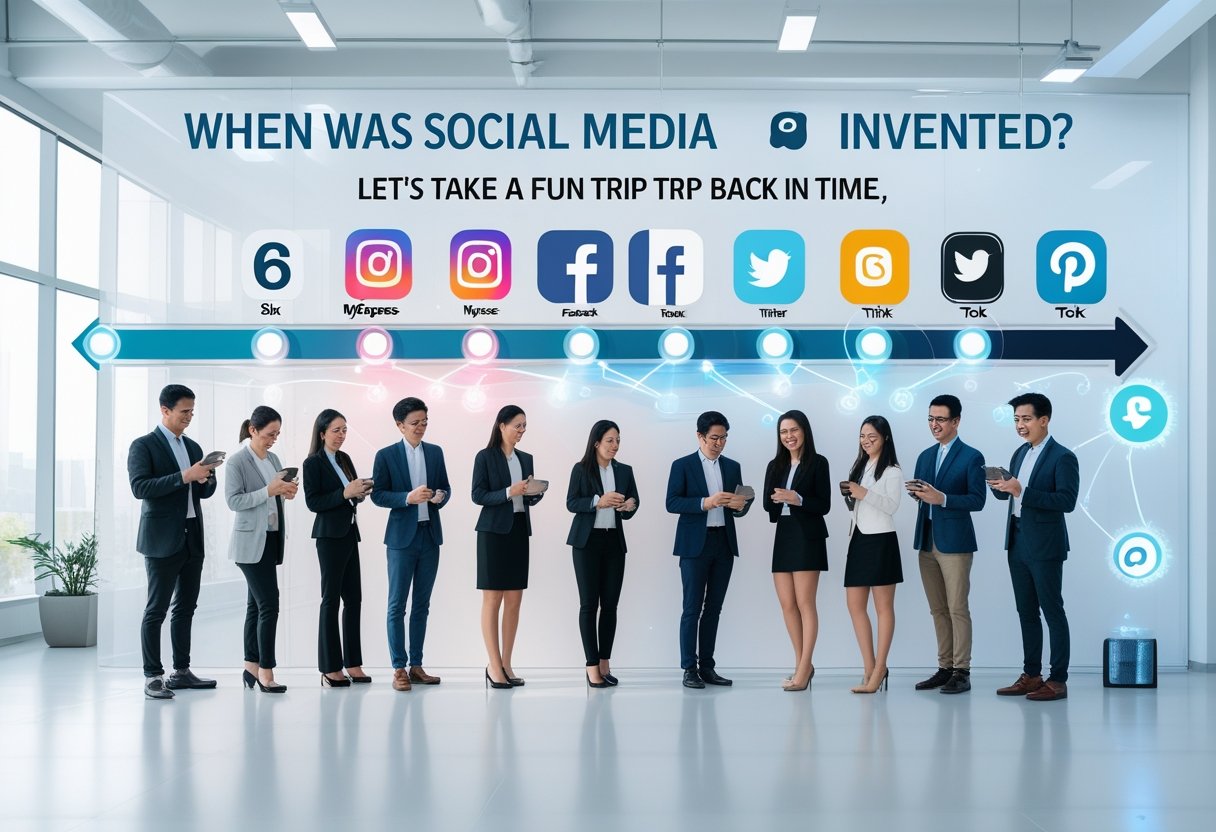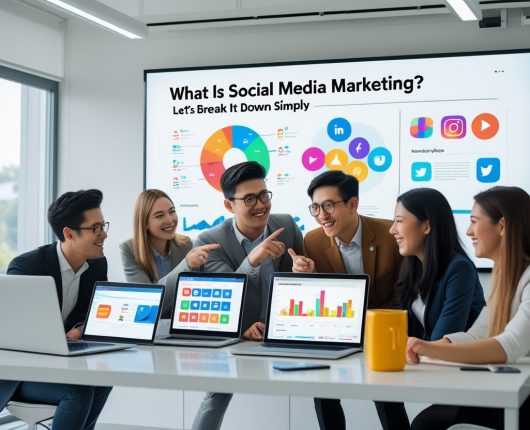Ever wondered when social media was invented? You are not alone. It is one of those
questions that takes you down memory lane — from clunky computers to scrolling
through feeds on your phone. Let’s kick off a journey through how humans learned to
connect, share, plus express themselves online.
The Birth of Online Communication (1970s – Early 1980s)
Picture this. No Wi-Fi. No memes. Just a buzzing modem and glowing green text.
Back in the 1970s, early systems like Advanced Research Projects Agency Network
(ARPANET) and Bulletin Board Systems (BBS) let people send short messages and
swap files. It felt like magic, tiny communities chatting across screens.
I still remember my first forum post in the 90s. Slow, clunky, yet thrilling. These early
chats planted the seed for everything we call social media today.
The First Real Social Platform (1997: Six Degrees)
So when did things start to feel familiar? In 1997, a site called Six Degrees appeared. It
let you build a profile, list friends, then connect with others — basically a digital
handshake.
Six Degrees was the spark. It gave people an online face, not just a username. That
idea, your digital self — changed everything.
It shut down in 2001, but its DNA runs through every social network you use now.
The Boom of Early Networks (2000–2005)
Then came the big wave. Friendster (2002), MySpace (2003), plus LinkedIn (2003)
arrived. Suddenly, everyone wanted to connect online.
MySpace stood out. Custom songs, flashing layouts, top-friend lists — it was pure
chaos and pure fun. You did not just chat; you showed off your world.
To me, this was when social media stopped being about data and became about
identity. You were building your own corner of the web.
The Facebook Era (2004–2010)
Here is where things exploded. Facebook launched in 2004. What started as a student
project soon reshaped how billions connect.
It felt cleaner. More personal. Real names, real faces, real connections. Then came
YouTube (2005) plus Twitter (2006). Social media got faster, visual, alive.
For me, this was the turning point. The web stopped being a tool and became a
community. Everyone suddenly had a stage and an audience.
The Mobile and Visual Shift (2010–2020)
Then we all went mobile. Phones in hand. Apps like Instagram (2010), Snapchat (2011),
plus TikTok (2016) took over.
Posts became shorter. Photos told stories. Videos ruled. It was quick, fun, and addictive
— in a good and bad way.
From where I sit, this era blended psychology with design. Likes, hearts, and views
shaped how we felt online. Yet it also opened new careers — influencers, creators,
entrepreneurs.
The Modern Mix (2020–Present)
Now we are in a wild mix of ideas. Social media is part of everything — work, news,
hobbies, even blockchain.
Platforms like Threads, Bluesky, plus Lens Protocol promise privacy and user control.
Feeds are smarter. Algorithms, friendlier (sometimes).
So, when was social media invented? The truth — it keeps being invented, one era at a
time. Each new platform adds a chapter to the story.
I believe we are now in the era of personalization. You want real voices, privacy, and
choice over your data. Tech is catching up.
What’s Next for Social Media?
So what is coming next? Think virtual reality, artificial intelligence, and voice-based
apps. The next “social feed” might float in your glasses or speak back to you.
Kids of the future might not ask when social media started. They might ask how it
changed us.
From my side, it feels like we are heading toward deeper, more human digital spaces —
places that feel like chatting in a cozy café, not shouting in a crowd.
A Friendly Wrap-Up
So, when was social media invented? It began decades ago — with people typing on
glowing screens and it keeps evolving every day.
Social media is more than code. I see it as a mirror that reflects who we are, plus a
megaphone that amplifies what we care about.
So next time you scroll, pause for a second. Remember that you are part of an ongoing
experiment in connection — one that started long before selfies existed.
Keep sharing. Keep exploring. Keep the conversation alive.






